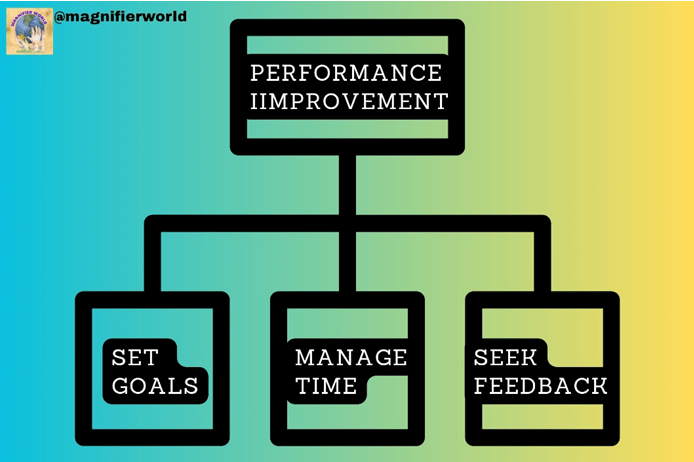Introduction
In the dynamic landscape of today’s business world. Sales strategy in business plan crafting a extensive business plan is a critical step towards success. At the heart of any successful business plan lies a well-defined sales planning. A Sales strategy in business plan serves as a roadmap, guiding a company’s efforts to achieve revenue growth, customer acquisition, and market expansion.
In this article, we delve into the Sales strategy in business plan of developing a robust sales strategy as an integral component of a successful business plan. We explore the key elements, methodologies, and best practices that drive sales success in the modern competitive arena.
Understanding the Significance of a Sales strategy in business plan
A sales strategy is a structured approach that outlines how a business will identify and reach its target customers, convert prospects into paying customers, and ultimately drive revenue. It provides the blueprint for aligning sales activities with business goals and objectives. A well-designed sales strategy supports client relationships, market penetration, and overall business success in addition to improving revenue production.
Consumer behavior is changing, markets are continually changing, and technology is changing how organizations run. A well-defined Sales strategy in business plan serves as a guiding compass for organizations to navigate these challenges and achieve sustainable growth. It acts as a roadmap that aligns a company’s sales efforts with its broader business goals and objectives.
Let’s delve into the key reasons why understanding and implementing a Sales strategy in business plan is crucial.
At its core, a sales strategy is designed to drive revenue. It outlines the steps and approaches that a business will take to attract and convert prospects into paying customers. By establishing clear goals, target markets, and sales tactics, a sales strategy ensures that a company’s resources are focused on activities that directly contribute to the bottom line.
Elements of an Effective Sales strategy in business plan
1. Market Analysis
Before crafting a sales strategy, a comprehensive understanding of the target market is essential. This involves assessing the industry landscape, identifying potential customers, understanding competitors, and uncovering market trends. A thorough market analysis provides insights that inform decision-making and guide the overall sales approach.
2. Customer Segmentation
Effective Sales strategy in business plan involve segmenting the customer base based on various factors. Including demographics, behaviors, and preferences. This segmentation allows for tailored approaches and personalized interactions, thereby enhancing customer satisfaction and retention.
3. Value Proposition
A well-defined value proposition outlines how a product or service solves a customer’s problem or fulfills a need better than the competition. Communicating this unique value is crucial in attracting and retaining customers.
4. Sales Goals and Objectives- Sales strategy in business plan
Setting clear and achievable sales goals is a fundamental aspect of a sales strategy. These goals should be specific, measurable, attainable, relevant, and time-bound (SMART). Whether the focus is on revenue targets, customer acquisition, or market share, goals provide a clear direction for the sales team.
5. Sales Tactics
Developing a set of sales tactics involves determining how sales activities will be executed. This includes decisions on sales channels (direct, indirect, online), pricing strategies, lead generation methods, and customer engagement approaches.
6. Sales Team Structure
Defining the roles, responsibilities, and structure of the sales team is crucial for efficient execution. Establishing clear lines of communication, reporting structures, and collaboration mechanisms ensures a cohesive approach.
7. Sales Process- Sales strategy in business plan
A streamlined sales process outlines the steps from lead generation to closing a sale. Mapping out this process helps identify bottlenecks, improve efficiency, and enhance the overall customer experience.
8. Sales Technology and Tools
In the digital age, leveraging sales technology is essential. Customer relationship management (CRM) systems, sales analytics tools, and automation software streamline processes and provide valuable insights.
9. Sales Training and Development: Equipping the sales team with the necessary skills and
knowledge is vital. Ongoing training ensures that sales professionals stay updated on product knowledge, industry trends, and effective selling techniques.
Methodologies for Crafting a Sales strategy in business plan
Crafting a successful sales strategy requires a systematic approach that takes into account various methodologies and frameworks. These methodologies provide a structured way to analyze the market, identify opportunities, and develop a plan of action to achieve sales goals.
Each of these methodologies brings a unique perspective to crafting a Sales strategy in business plan. Businesses often find success by combining elements from multiple methodologies to create a customized approach that aligns with their products, target audience, and overall business goals.
1. SWOT Analysis
Conducting a SWOT analysis (Strengths, Weaknesses, Opportunities, Threats) helps recognize internal strengths and weaknesses. As well as external opportunities and threats. This analysis provides a holistic view of the business’s position in the market, guiding the development of a targeted sales strategy.
2. Segmentation, Targeting, Positioning (STP)
The STP framework involves segmenting the market, targeting specific customer segments, and positioning the product or service to meet the unique needs of those segments. This approach ensures a focused sales strategy tailored to different customer groups.
3. Value-Based Selling
This approach focuses on demonstrating the value a product or service brings to the customer. It involves understanding the customer’s pain points and aligning the product’s benefits with those pain points.
4. Consultative Selling
In consultative selling, sales professionals act as advisors, seeking to understand the customer’s needs and offering solutions that genuinely address those needs. This approach builds trust and fosters long-term customer relationships.
5. Inbound Marketing
Inbound marketing involves creating valuable content that attracts potential customers to the business’s website or platforms. By providing valuable information and insights, businesses can position themselves as industry experts and generate leads organically.
Best Practices for Effective Sales strategy in business plan Implementation
Implementing a Sales strategy in business plan is effectively is a crucial component of achieving business success. A well-crafted strategy is only as good as its execution. To ensure that your sales strategy generates the desired outcomes, it’s essential to follow best practices that optimize your sales efforts and drive results.
1. Collaboration between Sales and Marketing
Aligning the efforts of the sales and marketing teams is essential. A shared understanding of target customers, messaging, and goals ensures a consistent customer experience and maximizes the impact of both functions.
2. Data-Driven Decision Making
Leveraging data analytics to monitor sales performance, track customer behavior, and identify trends allows for informed decision-making. Insights derived from data enable businesses to refine their sales strategy based on real-time feedback.
3. Continuous Evaluation and Adaptation
A successful sales strategy is not static. Regularly evaluating performance metrics, customer feedback, and market trends allows for adjustments and refinements to the strategy over time.
4. Customer-Centric Approach
Placing the customer at the center of the sales strategy fosters trust and loyalty. Addressing customer needs, offering personalized solutions, and maintaining open lines of communication are key to building lasting relationships.
5. Sales Training and Skill Development
Investing in the training and development of the sales team ensures that they are equipped with the latest industry knowledge and selling techniques. This investment contributes to the team’s effectiveness and productivity.
Conclusion
A well-crafted Sales strategy in business plan is a linchpin in a comprehensive business plan. It serves as the guiding force that aligns sales efforts with overarching business goals, ultimately driving revenue growth and market expansion. The elements of an effective sales strategy, coupled with methodologies such as SWOT analysis, STP, and value-based selling, provide a robust framework for businesses to navigate the complexities of the modern business landscape.
By implementing best practices that emphasize collaboration, data-driven decision-making. Sales strategy in business plan a can create a sales strategy that not only maximizes revenue but also nurtures enduring customer relationships and positions them for sustained success. As markets evolve and consumer preferences shift, the ability to adapt and refine the sales strategy becomes paramount, ensuring that businesses remain agile and competitive in an ever-changing environment.
FAQs related to Sales strategy in business plan
Q What is Sales strategy in business plan?
A sales strategy is a set of decisions, actions, and goals that inform how your sales team positions the organization and its products to close new customers. It acts as a guide for sales reps to follow, with clear objectives regarding sales processes, product positioning, and competitive analysis. Image Source.
Q What are the 4 sales strategies?
A salesperson’s selling strategies will differ, depending on the type of relationship the buyer and seller either have or want to move toward. There are essentially four selling strategies: script-based selling, needs-satisfaction selling, consultative selling, and strategic partnering.
Q What are 7 steps of sales strategy?
There are seven common steps to the selling process: prospecting, preparation, approach, presentation, handling objections, closing and follow-up. The first three steps of the selling process involve research into prospects’ wants and needs, with your presentation midway through the selling process.
Q What is 5 P’s strategy examples?
Each of the five P’s represents a distinct approach to strategy. This includes Plan, Ploy, Pattern, Position and Perspective. These five elements enable a company to develop a more successful strategy. A strategy is long-term and encompasses several aspects of the company or organisation you work with.
Q Who formulated the 5p’s of strategy?
In 1987, the Canadian management scientist Henry Mintzberg distinguished five visions for strategy for organisations. He calls them the 5 P’s of Strategy. They stand for Plan, Pattern, Position, Perspective and Ploy.
Q What is strategy as plans?
A plan is an arrangement, pattern, program or scheme for a definite purpose. A strategy, on the other hand, is a blueprint, layout, design, or idea used to accomplish a specific goal that is open for adaptation and change when needed.
Q What are the selling techniques?
• Call leads immediately. …
• Research your prospects. …
• Sell yourself. …
• Prepare a script. …
• Engage with leads at least seven times. …
• Call at convenient times. …
• Focus on one thing at a time. …
• Offer less.
Q How can business increase sales?
Increase sales
1. INTRODUCE NEW PRODUCTS OR SERVICE. Provide a broader range of products or services for your clients. …
2. EXPAND TO NEW DOMESTIC MARKETS. …
3. ENHANCE YOUR SALES CHANNELS. …
4. MARKETING ACTIVITIES. …
5. CHANGE YOUR PRICE. …
6. BE AWARE OF THE COMPETITION. …
7. IMPROVE COMMUNITY RELATIONS. …
8. DON’T NEGLECT CUSTOMER SERVICE.
Q What increases sales growth?
In order to increase sales, especially your end-of-year sales, you have to increase the number of customers you’re selling to, enhance what you’re selling, improve your messaging, or all of the above. If you can improve every step of your sales process by even a little, you can increase sales by a lot.
Q How do you sell a product to a customer?
1. Present your product’s features but focus on its benefits and link these to your customer’s requirements.
2. Be enthusiastic and show your conviction.
3. Explain what makes your product different from the others.
4. Anticipate likely questions or reactions and be prepared to respond to them.
Q How do you talk in sales?
The best way to do this is to show them that you are familiar with their industry and their challenges.
1. Know their market. …
2. Know their pain points. …
3. Know your strengths. …
4. Stop trying to please everyone. …
5. Tell them what you sell. …
6. Ask a provocative question.





